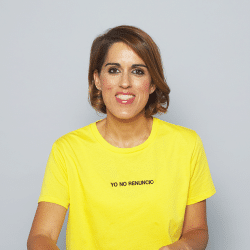Hollaback!
http://www.ihollaback.org/Introduction
Emily May is making street harassment as culturally unacceptable as sexual harassment in the workplace, by naming and raising visibility of the problem, and establishing systems and accessible tools to effectively report and address it.
The New Idea
For decades, sexual harassment in schools and the workplace has been widely seen as unacceptable, and a wide variety of both preventive and punitive measures have been established to address it. The clear legal framework established for workplace sexual harassment has failed, however, to translate to public space, due both to a lack of accountability, and to the unpredictable nature of street harassment.
Emily is working to change that: first, by taking the spotlight off the harassed and shifting it to the harasser, in order to reverse the power dynamics of sexual harassment in public space. Using social media and crowd-source technology, she has created a real-time response to street harassment. When confronted with street harassment, victims can anonymously share their story online or via an iPhone or Android app, marking the incident’s location on a Google map, and uploading photos of their harasser. The result is an immediate feeling of agency among victims and a shared understanding that they aren’t alone – but more importantly, a growing data set that Emily and her team are using to shift the very way in which we look at street harassment.
Recognizing that only a fraction of the people who live the problem will report it, and that the problem is too pervasive to combat through punitive means, Emily is building a global movement of young leaders, who then feed these stories to local media, policymakers, and related influencers. Together, they aim to break the silence and stigma associated with street harassment and legitimize it as a problem in need of real attention and solutions.
Since 2010, Hollaback! has grown from a handful of sites to operating in 65 cities in 22 countries. The result is over 800 press hits globally, on all five continents and in 12 languages. Her work has been featured in People, Fast Company, and The New York Times. At a policy level, Emily and the team inspired the world’s first-ever hearing on street harassment in New York City, with the result that today, individuals can directly report harassment to the councilmember in the district in which they were harassed. And in London, local Hollaback! leaders worked with the government to develop Project Guardian, where 2,000 officers who police the city’s public transport network have been trained to deal with sexual offences and a reporting hotline has been developed.
The Problem
Prior to the 1970s, it was not uncommon for women to confront lewd gestures, sexual innuendo, groping, and other forms of verbal and physical harassment in the workplace. The decade, however, saw the creation of a host of anti-harassment legislative acts and mechanisms for addressing it, with the result that today, companies are legally bound to workplace harassment policies, complaints and lawsuits can be filed, offenders can be fired, and the cultural standards for permissible behavior have substantially evolved.
Yet the norms that govern behavior in the workplace, in schools, and in our public and private institutions are not the same as those applied to public space. Studies show that between 70-99% of women are verbally harassed, threatened, groped, or witness to public exposure at some point during their lives, and with each separate identity — being young, being queer, or being a person of color — there is an exponentially greater likelihood of experiencing street harassment.
Without a name that articulates the gravity of the action, people assume that “catcalling” is just part of what it means to be a woman; that the act of public masturbation is repellent but not criminal; and that homophobic slurs are inevitable. Yet the lack of public understanding of street harassment as a problem belies its impact on those who experience it.
Numerous psychological harms have been empirically linked to the experience of sexual harassment among women, including nausea, sleeplessness, feelings of helplessness and isolation, and anxiety and depression. Common emotional and psychological consequences include embarrassment, self-consciousness, low self-confidence, fear, confusion, reduced popularity, and other psychological harms. In extreme cases, women and girls report missing school, changing jobs, or moving homes to avoid exposure to harassment. Moreover, data suggests that street harassment may produce a "broken windows effect": men who harass women and the LGBT community with impunity may seek out the same feeling of power and control in other harmful ways. Believing that they cannot be held responsible for their actions, they become more willing to defy other cultural and legal norms. Neighborhoods where street harassment is pervasive are thus more likely to experience more pernicious problems. Efforts to curb street harassment and increase public accountability have been shown to improve public safety in other ways.
Even when the problem is named and understood, however, street harassment remains difficult to combat, due to its unpredictable nature. Victims of street harassment typically don’t know when or where it’s going to happen and are almost always alone. Lacking both knowledge and tools with which to effectively respond, they assume there is nothing they can do. The most common advice is to simply ignore it: an instruction that denies any feeling of agency and further reinforces the idea that reacting to street harassment is unfounded.
The Strategy
In 2005, a woman on the NYC subway named Thao Nygen snapped a photo of a man who was openly masturbating in the seat across from her. When the police ignored it, she posted it to Flickr. The image went viral, and made its way to the front page of the New York Daily News. The man was eventually identified as an older, upper-middle class raw-foods restaurant owner, and charged. The event incited a citywide conversation on street harassment.
Emily was struck at that moment by the emerging power of mobile technology as an organizing tool: a way of capturing random and isolated events, and giving people the tools to respond not just as individuals, but as a collective, through the broader lens of society. As a young woman in New York City, she had grown increasingly frustrated by the unceasing string of catcalls, abusive remarks, and threats that left her feeling both uncomfortable and unsafe. She understood, however, that ending street harassment could not be accomplished through punitive measures, nor by shaming individual harassers. What she needed was a way to change the way our culture talks about street harassment by calling attention to the phenomenon. Camera phones were just beginning to gain widespread traction, and she quickly realized that by enabling individuals to share their personal stories along with optional photos of their harassment, citizen media could do just that.
Emily began by creating a mechanism through which victims could respond in real-time to harassment: at first via a simple blog, and later via a robust web platform, and an iPhone and Android app. Since 2010, she and the team have collected more 5,000 stories in over 14 languages, including Croatian, Czech, Dutch, Hebrew, Hindi, and Turkish.
From the outset, she understood that one or two stories told by one or two people—while impactful on the individuals who shared them—would never make a lasting difference. To grow and power the platform, she thus began building a powerful cadre of digital organizers and impassioned grassroots leaders, tasked with conducting a combination of online and off-line efforts designed to both increase story-sharing within their communities, and to feed those stories into the hands of legislators and the media. Following a careful selection process, leaders undergo a three-month training process, which includes one-to-one support as they form a local group of volunteers, set goals, meet with partners, and define their strategies.
Recognizing that street harassment looks different in Cairo than it does in Rio, and the possible responses vary just as widely, Emily encourages each local leader to innovate. Site leaders have developed partnerships with local universities, and lobbied local elected officials; they’ve hosted panels with local legislators and key influencers in the feminist movement; they’ve held rallies, workshops and flash mobs, and a wide array of other events. In areas where government systems are effective enough to warrant policy solutions, site leaders may focus on legislative advocacy; leaders in other cities may focus more on public speaking, college campus outreach, or driving culture change.
The results are thus many and varied, but together comprise a map of the many different ways communities can respond to street harassment. Thanks to the work of Hollaback! Brussels, Belgium's Equal Opportunity Minister has committed to leading a year-long project to map incidents of sexual violence, street harassment, and homophobia, in an attempt to understand the roots of misogyny and homophobia in Brussels. The Hollaback! London team worked with the government to launch a reporting hotline, and together developed Project Guardian, training 2,000 officers who police the city’s public transport network to deal with sexual offenses. In Philadelphia, Hollaback! organizers, with the support of the Southeastern Pennsylvania Transportation Authority (SEPTA), secured funding for a series of anti-harassment advertisements in the city's subway system.
Beyond collecting and sharing stories, Emily is working to grow the overall field of street harassment. Doing so required first legitimizing street harassment as a pressing problem, by demonstrating its prevalence and its impact. Recognizing that she had the world's most robust data set on street harassment and how it operates, she thus turned her attention to the research community. She partnered with a team of researchers at Cornell University to conduct a content analysis of stories submitted through Hollaback!. The study found that targets felt violated by all forms of harassment, from verbal harassment to groping, and that taking action, whether in the moment, online, or by starting or joining a Hollaback! site in their community, had a positive influence on individuals' emotional response.
In New York City, Emily and her team are working with local legislators to get questions of street harassment included on the annual community health survey, in order to establish a better baseline. Thanks to the work of Hollaback!DC, she has also forged a partnership with the National Intimate Partner Violence survey, which asked questions about street harassment for the first time. "Non-contact unwanted sexual behavior" was found to be the most prevalent form of sexual violence in the US for men and women. Emily and her team plan to use the data, due to be released by the first quarter of 2014, in a forthcoming research project designed to evaluate their first-ever national sample and establish a baseline. Hollaback!’s own dataset is designed to serve as an immediate feedback loop, whose effectiveness, when paired with such a baselines, will grow as more and more stories are added. Already, Emily has begun to use the platform to map incidents in real-time, and to feed that information to local district leaders. She and her team have successfully used the data to convince legislators in New York City to develop and implement policies to improve feelings of public safety, and she hopes to deploy a similar approach in other cities where Hollaback! operates.
Because so much of the work is powered by volunteers, Hollaback! has been able to grow quickly at relatively little cost. Her budget has seen a 35% annual increase since her formal launch in May 2010, reaching $300,000 cash and $3 million in kind in FY13-14. While changing the framework around which we view street harassment and access to public space is difficult to measure, early signals look promising. In 2010, there were no funding portfolios dedicated to street harassment, digital movement building, or online feminism. In the past three years, NOVO and the Caruso Foundation have explicitly included street harassment in their portfolios – thanks, in part, to the explosive growth of the street harassment movement over the last three years. The UN has launched its own anti-street harassment initiative, and copycat efforts have sprung up globally. To date, more than 350 site leaders have been trained, and have launched active Hollaback! chapters in 71 cities in 24 countries.
The Person
While others her age were dreaming of becoming astronauts and doctors, movie stars and presidents, Emily was determined to be CEO of a major corporation. At age 8, she carefully honed her business model and salesmanship by selling t-shirts she’d decorated at her dad’s store in Richmond, VA. At 12, she bought my first navy blue “power suit,” and was named President of the Future Homemakers of America.
That changed for her in high school, when she met an older man while volunteering at a homeless shelter, who was both without a home and without hope. Without the language to describe it, she decided then that she wanted to be a social entrepreneur. She went on to the President of her high school Key Club, and received her county’s “community serviceperson of the year award” her senior year.
Emily moved to New York City after college, and it was there that she became suddenly and viscerally aware of street harassment. One night in 2005, she and a group of six friends – three women and three men – got into a conversation about street harassment. The women shared story after story of being groped, verbally harassed, and feeling unsafe. One of the men said, “you live in a different city than we do.” A lightbulb clicked. Emily and the others present that night resolved to change that. Inspired by the story of Thao Nygen, the woman who stood up to her harasser on the subway, Emily convinced the group to collect stories of street harassment and to collect them online in the form of a blog.
As press picked up, women and LGBTQ individuals around the world began reaching out to bring Hollaback! to their communities. Emily was working in the anti-poverty field at the time, and in May 2010, decided to step up and lead Hollaback! full-time as its first executive director.

 Tile image
Tile image Tile image
Tile image


